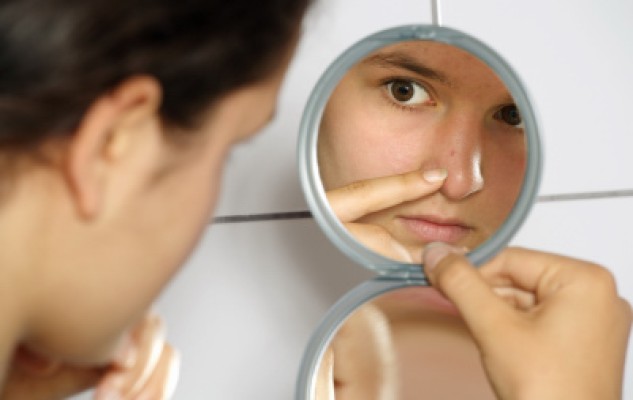
When I think about what things were like when I was a teenager, I can’t help but make this strange expression that looks like something between a smile and a grimace. I’m sure most of you make the same face. Being a teenager was fun. It was first loves and the first taste of freedom, but for many, it was also greasy foreheads and relentless acne. When you finally grow out of those pimples you breathe a sigh of relief thinking the pimples and blemishes are just another awkward teen memory.
Then, for many of you, adult life brought with it not only the stress and freedom of adulthood, but also adult acne.
What is adult acne and why is it different from the acne many people have as teenagers?
As teenagers, the breakouts most teens have tend to be located along the t-zone (the forehead, nose, and chin) and are, for the most part, caused by the sudden fluctuation of hormones during puberty. That’s why that type of acne tends to just go away on its own after puberty has passed. Adult acne, too, can be caused by hormonal fluctuations (especially during menstrual cycles, pregnancy, menopause or from certain medications), but these breakouts are more common along the lower part of the face like the area below the cheekbone, chin, and jaw line.
Most teenagers will suffer from blackheads, whiteheads, larger pustules and cystic acne. Adult acne will appear in any and all of those forms but adults are also prone to the added joys of rosacea. That’s an entirely different conversation.
What are some of the major causes of acne?
Hormones certainly play a major role in adult acne. Other culprits could be stress, imbalanced diet, makeup and skincare products, and even your hairstyle.
Stress releases hormones that cause your body to release other hormones to counteract them. The hormonal flood often sends your complexion into a tailspin. Many people mistakenly assume greasy foods or chocolate cause acne. Studies have shown that’s not really the case. The major culinary criminal in the case of adult acne is actually the sugar in candy, as well as high-glycemic-index carbohydrates like white bread, pasta, potatoes, etc. Sadly, the wrong foods can spike insulin levels, leading to a chemical imbalance and, in turn, acne.
How do you treat acne?
What about topical acne treatments? This information will surprise you. Traditional acne creams and lotions contain an ingredient that may actually irritate your skin and make your acne problem worse. That’s right. Your efforts to clear your skin may actually add fuel to the fire. These products disrupt your skin’s natural pH, chip away at your skin’s protective layer, and trigger the production of sebum. To avoid these types of products, I prefer gel or gel-cream type formulations that avoid harmful ingredients like PEG’s, glycols and soap-based emulsifiers (often listed as self-emulsifying wax or polysorbate).
Try a DIY skin care recipe from mother nature and learn more about eliminating harmful and toxic chemicals from beauty products.
Do you have a favorite natural remedy for treating acne? Don’t keep it to yourself! Share it below!
This Week's Articles Read, learn, live
-
 Summertime grilled vegetables
Summertime grilled vegetables
-
 5 Ways to make this summer full of unforgettable family fun
5 Ways to make this summer full of unforgettable family fun
-
 10 Reasons to take a family vacation in Puerto Vallarta
10 Reasons to take a family vacation in Puerto Vallarta
-
 5 Fun tips for spring cleaning with kids
5 Fun tips for spring cleaning with kids
-
 10 chick flicks with New Year’s Eve scenes
10 chick flicks with New Year’s Eve scenes
-
 The day after Christmas: 5 ways to handle the biggest downer of the year
The day after Christmas: 5 ways to handle the biggest downer of the year
{ 1 comment }
Yes! The skin balancing products of Suki. They’re toxin-free and clinically proven: http://bit.ly/13XC3Nq
{ 1 trackback }